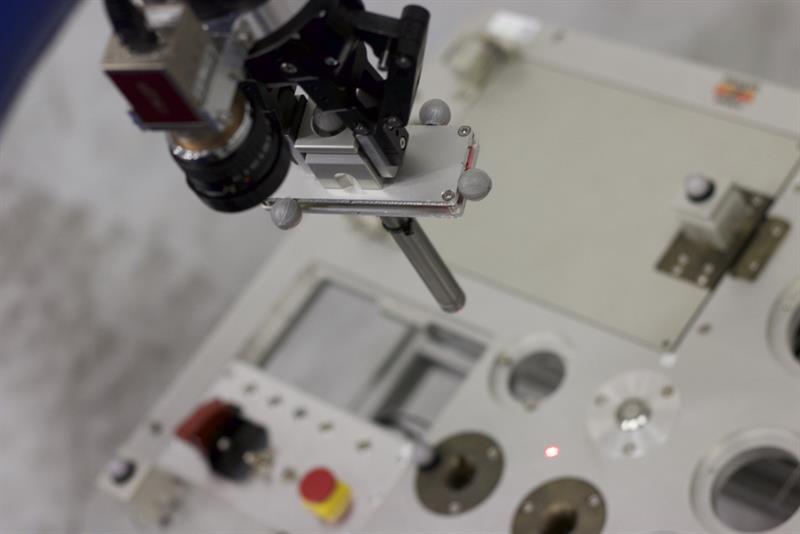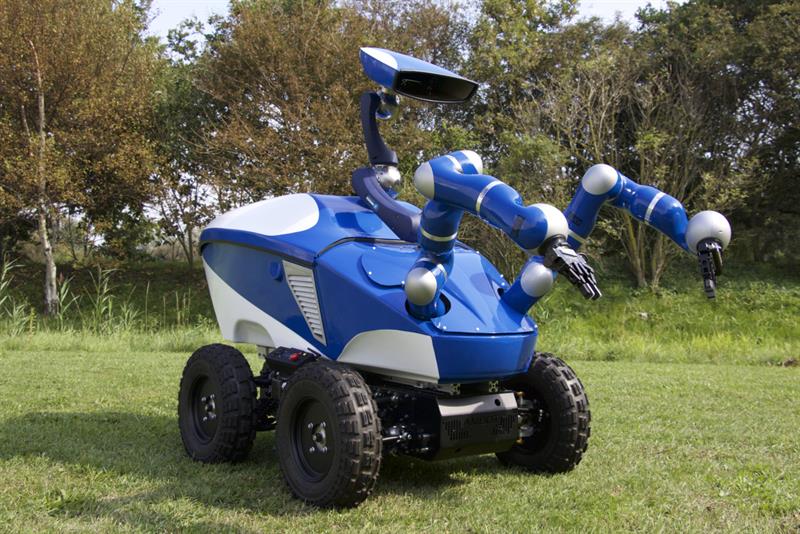Morgensen will carry out precision operations with the rover from 400km above, on-board the International Space Station. The experiment will make use of haptic control, providing the astronaut with force-feedback to let him feel for himself the resistance the robotic arms are experiencing. It is hoped that through this Morgensen will be able to perform dexterous mechanical assembly tasks in the sub-millimetre range.
"When we humans have to perform precision operations, for instance simply inserting our key into the lock of our door, we are relying largely on our feeling of tactile force receptors in the hands and arms – not on eyesight," said André Schiele, head of the ESA's Telerobotics and Haptics Laboratory and associate of the Delft Institute.
"Visual information is of minor importance – these kinds of tasks can be done with our eyes closed. Now, ESA is transferring this skill to remotely-control robotic systems."

The lab team, working with students from Delft University of Technology, has developed a dedicated rover called Interact Centaur. The 4x4 wheeled vehicle features a camera and a pair of highly advanced robotic arms designed for remote force-feedback-based operation and a number of proximity and localised sensors.
Morgensen will attempt to guide the robot to locate an 'operations task board' and then remove and plug a metal pin into it. The pin has a very tight mechanical fit and tolerance of 150µm.
"Without haptic feedback, the operator of a robot arm or rover must be very careful not to damage something if the robot is in contact with its environment. As a result, simple tasks in space often take a very long time," Schiele continued.
"The tactile sensation derived from any task contains important information about the geometric relationship of the objects involved and therefore allows us to execute tasks more intuitively and thus significantly faster."
Although the signals sent between Morgensen and the rover must cover a vast distance it is expected he will feel exactly what the robotic arms do, with just a slight amount of lag.






